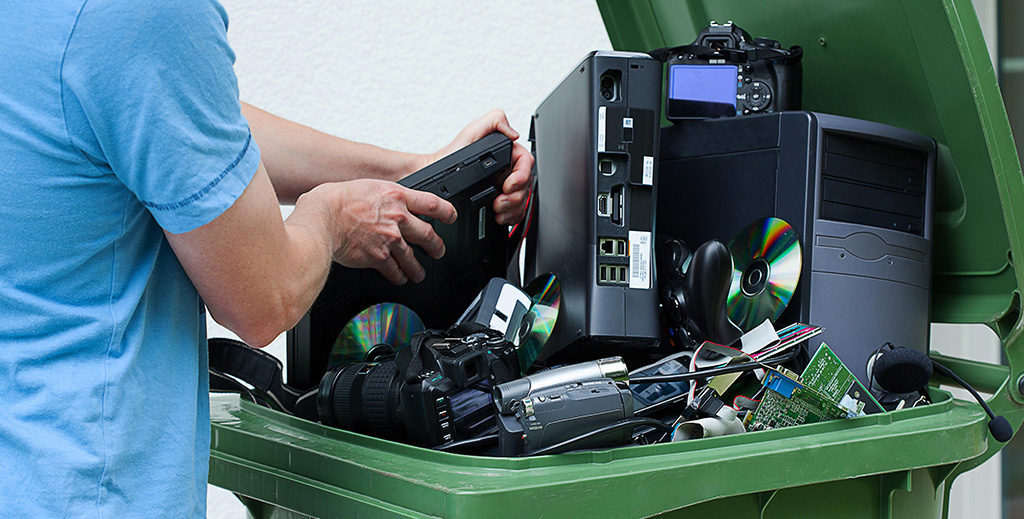
An important aspect of the storage hardware cycle is retiring and disposing of the equipment. If organizations fail in the mechanism of proper IT equipment disposal, they may jeopardize sensitive data and put themselves at risk for compliance violations.
The object is to undertake the disposal of IT equipment at the right time, accounting for costs, data safety, and workload requirements. IT departments should undertake the disposal phase in the most effective manner possible. To accomplish this IT hardware disposal, storage teams have to plan how to carry out disposition and treatment. The complex process can be broken down into a series of steps.
Understand when to retire the stored data
Retiring storage hardware too soon can push up costs, but waiting too long can put applications and data at risk. When to retire storage media depends on a variety of circumstances. If components are failing, this is the right time to indulge in IT equipment disposal, but it should not be retired before that.
Hardware for enterprise-class storage typically lasts three to five years, though the lifespan can vary among products. The warranty of the vendor is also an indicator of what you can expect. Data amounts and workloads also have a role to play.
Planning on how to retire and dispose of the storage media
A careful and concise plan is essential for IT equipment disposal. It needs to be done in such a way that it is cost-efficient and effective. At the same time, you need to adhere to the data governance and regulations in place. It should formulate a detailed plan that accounts for the remaining steps.
For each plan, there is a need to determine what the storage team takes on, how they will perform, and how to verify that completion. Organisations need to undertake the plan with the data framework in mind.
Preparing storage media for retirement
Before decomposing a storage device, IT hardware disposal has to undertake a final backup according to data governance policies and internal requirements. This backup ensures that there is no loss of critical or proprietary information. IT needs to verify the backup to ensure that the data is safe and secure.
IT teams have to take the necessary steps to decommission the data. An example is that they need to employ new drives, redirect network traffic, or reconfigure applications. A few of the tasks need to be carefully coordinated with the decommissioning process to ensure a smooth transition, whereas others can be prepared in advance to prepare for the transition.
Decommissioning of storage data
The step is all about people considering when they intend to retire storage hardware. It is not an easy thing to do. This means you need to take the media offline, which may include disconnecting a system from the network, unplugging it from the power source, and ensuring that the media has been removed from the workflow. The equipment may stay on the site for some time but will not be part of routine operations.
The main concern with the disposal of IT equipment is to ensure that there is no compromise on data. Any storage device that is removed still requires full security, and this is an important step.
Protection of storage media
It is hardly a surprise that the IT department may remove a storage device just after it has been decommissioned. They may even move it to a separate location. Even the team may sanitize the device and plan for effective IT hardware disposal. There is a possibility that they could leave it there and do nothing about it for a while.
There is a need to emphasise security at all times to safeguard the data and adhere to compliance regulations. Any careless act can lead to a compromise of data, or costly penalties may be levied. IT teams need to be aware, and this should not be the last step at all.
Sanitize the storage data
It is best to disinfect a device so that sensitive data cannot be accessed before disposing of it. HDDs and SSDs must be handled differently, with tools and methods appropriate to each kind.. It is also important to use the right sanitization techniques.
When you are deciding how to sanitise storage media, the IT team should evaluate the sanitization techniques to determine the best approach for the media. These are decisions that need to be made during the planning stage.
Disposing of storage equipment
Disposal of IT equipment means returning it to the merchant, selling it, donating it, or in some situations, destroying it. The approach depends upon the sensitivity of the data, the process of data sanitization, and whether the device is an HDD or SSD. The safest course of action may not be to delete the drive if it contains sensitive data. The precise problem will be revealed by the specific circumstances.
An IT firm that intends to destroy the device can do it on its own or hire a firm to accomplish the task. HDDs are easier to destroy than SDDs, but whatever the case, an organisation needs to ensure that it is done properly.
To sum up, if you are using an outside firm’s knowledge, the organization you select must be accredited in disposing of IT assets and employ disposal techniques. An example is if the company does not utilize the proper shredder to destroy an SSD, some data fragments may escape the procedure. The team will also ensure it can conduct an audit trail that showcases the device’s destruction.